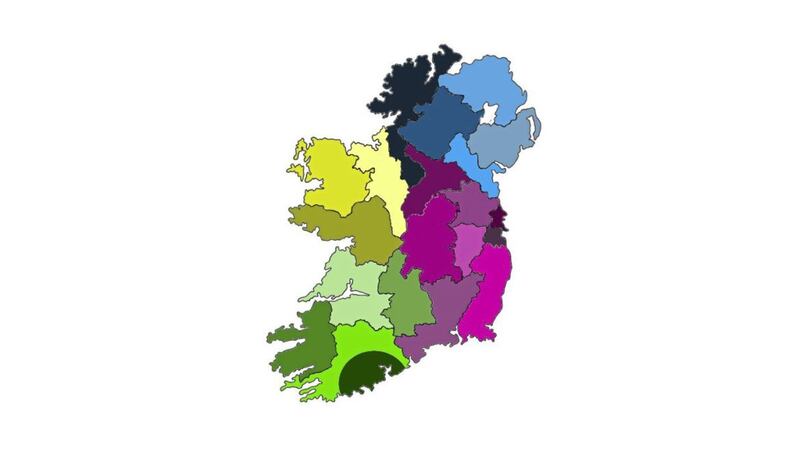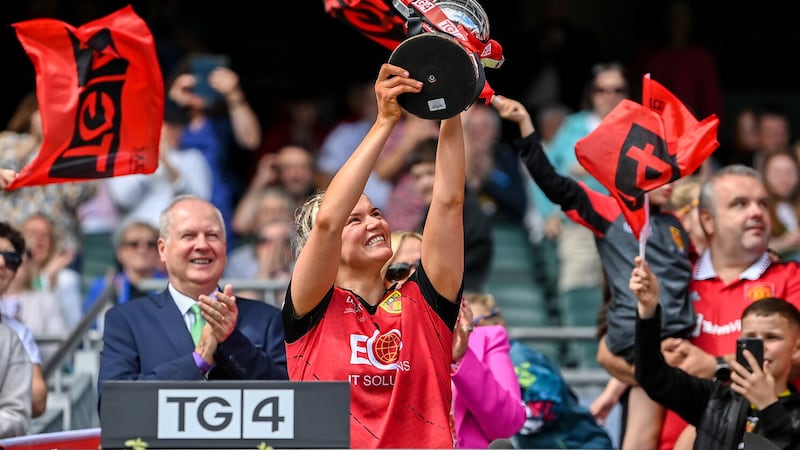WHETHER Dublin find their way over the line or not this weekend, what the drawn game showed us was that their run is coming to an end.
Not because they failed to win, or failed to convince. Rather, it was who they failed to win against.
Mayo have always been able to give it to the Dubs, but in essence their team since 2012 has been a core of 24 men. They reached incredible heights but even if they’d won one or more, there was never the sense that Mayo were here to dominate football.
Kerry are a different beast. Their All-Ireland semi-final defeat by Galway this summer ended their hopes of six minor titles in a row. Had their U20s not been raided by the senior setup, there’s a fair chance they’d be dominating that grade now too.
As far as watching Dublin are concerned, the All-Ireland series has become tedious for supporters. The clamour for change has become so desperate that we’ve started to forget what we’ll be changing to.
If Dublin don’t win any of the next five All-Irelands, there’s a fairly big chance that it’ll be Kerry who win them instead.
That’s Kerry, with their 37 All-Ireland titles, winning some of them without playing a proper game the whole summer.
Splitting Dublin would chop away a lot of their advantages, not least the population one, but all we’d really be doing is handing more All-Irelands to Kerry.
If Cork get their act together as the latter half of this year suggests they are, then even if Kerry and Dublin both fell away, the balance of probability suggests it would fall in the Rebels’ favour. And if not, there’s only a small select of counties that would be in line to take advantage of all that ‘if’.
The GAA has always made the argument in their defence of the funding of Dublin that they’re trying to bring others up the hill to meet the Dubs, rather than cut the legs from under the behemoth.
The more you look at it, the more you think the whole idea has to meet somewhere in the middle.
As a venture that will bring success, inter-county football is effectively dead to three-quarters of the counties playing it.
The peak of the mountain has risen so high that that the levels have become unobtainable for most. An unfashionable county with more moderate financial resources that that turns out a good generation of players could realistically set its ceiling at the Super 8s.
Look no further than the like of Roscommon, Clare, Armagh, even Monaghan, despite them holding their footing in the top flight. Decent teams, but they’ve no chance of ever winning Sam.
This is nothing new. There have only ever been a small handful of counties that have had all the pieces of the puzzle they’ve needed to win All-Irelands.
Do we overstate that early ‘90s period here in Ulster? Kerry were at a low point and while Dublin had footballers, it was chaotic and disorganised. The window was open.
The point being: would it ever happen again? Recent history suggests that it is only getting harder and harder.
Dublin’s population advantage is significant to a point, but in 2017, if you count U21 teams as adult, they had 215 adult football teams and 947 underage in the county. Cork had 383 adult teams and 932 youth teams.
So if you split Dublin, how do you not split Cork too?
And even if you split them, the only counties you’re really opening the door to are Kerry and the couple of growing population centres on the east Leinster belt, your Kildares and Meaths.
All that splitting Dublin would really achieve is to take All-Irelands off them and leave us looking for their successors to be handicapped in some similar way five years down the line.
That’s not really a long-term strategy for the sustainability of inter-county football.

You can’t fix this thing by simply splitting Dublin up, but that does need to happen as part of the plan. Dublin and Cork both need to be split in half. North-south would work alright in the capital, while the split in Cork would need to take the city’s less central location into account in order to give an even division.
That would bring both halves of the counties into a stratosphere that others can hope to reach.
Then you have to start amalgamating. There is no other choice, really. County boards are pouring away millions each year after county teams that have no hope. That’s money that could be far, far better invested in other areas, be it infrastructure or coaching.
Under this plan, you’d end up with 21 teams. Two each in Cork and Dublin, while Kerry, Meath, Kildare, Mayo and Galway would remain separate entities, although there is a debate as to whether that’s fair on the Connacht pair.
But in terms of playing numbers that exist at the minute, they can hold their own. Galway (103 teams) and Mayo (85) have a sufficient level of adult football within the county to start out on their own.
From there, there’s no conceivable way of getting the numbers exactly right, but you just work it as best you can between geography and numbers.
The idea of pairing with your neighbours might seem like the most unpalatable, divisive suggestion that could possibly be made.
But to be brutal about the thing, what exactly is it that they want to achieve under the current system? The currency of provincial titles must be second to only sterling at this stage.
The evening-up of playing populations would force the GAA to split its money much more equitably.
And the amalgamations would have their own potential. Take a combination of Offaly, Westmeath and Laois. The playing and financial resources put together would offer hope of competitiveness.
There are obvious logistical issues, not least finding a central training base for amalgamated counties, but given that there are hundreds of players already traipsing halfway across Ireland for training as it is, this is not the issue it once was.
And then there’s selling it to the people. Could Armagh and Down supporters ever stand and salute the one flag? It might be hard to stomach for a while, but it would settle. They might even come to enjoy the idea of their countymen being properly competitive, even if it’s not strictly for their county.
The opposition to counties joining forces is coated in misguided traditionalism. County football is great at the top, and almost completely meaningless from the middle down.
That may be harsh but it’s the reality.







